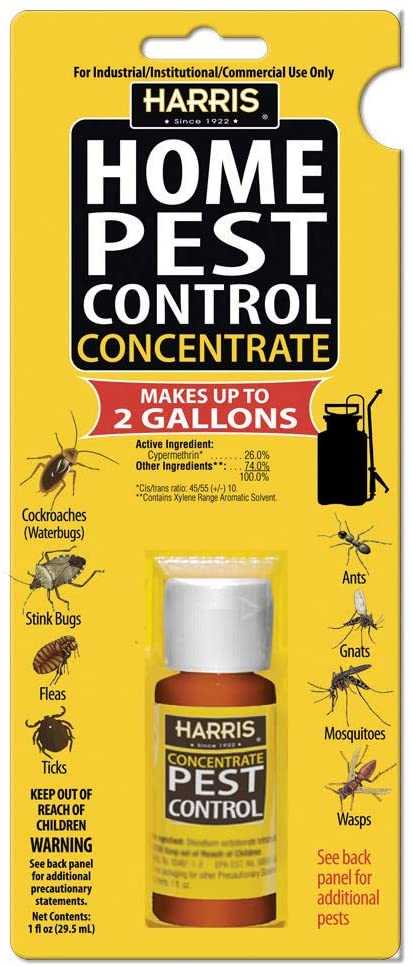Relied On A1 Exterminator Charlotte NC - Comprehensive Pest Solutions
Relied On A1 Exterminator Charlotte NC - Comprehensive Pest Solutions
Blog Article
Bed Bug Treatment Breakdown: Contrasting Chemical Vs. Non-Chemical Solutions
In the world of bug control, especially when taking care of the consistent concern of bed pests, the selection between chemical and non-chemical treatment solutions can be an essential one. Both approaches offer unique advantages and drawbacks, affecting variables such as effectiveness, safety and security factors to consider, and general expense. By examining the nuanced details of each technique, a more clear understanding of which path to go after in dealing with a bed pest invasion can be achieved.
Performance of Chemical Treatments
Chemical treatments for bed insect problems have actually been widely acknowledged for their quick and powerful efficacy in getting rid of these parasites. When considering the efficiency of chemical treatments, it is vital to comprehend that they can supply a quick and complete remedy to a bed insect issue.
In addition, chemical treatments have the advantage of offering recurring effects, indicating that they can remain to remove bed bugs also after the preliminary application. This recurring action is specifically helpful in combating any kind of prospective re-infestations. Additionally, the quick activity of chemical treatments can bring relief to people encountering serious bed bug problems, enabling them to reclaim control of their home promptly.
Security Concerns With Chemical Solutions
When utilizing chemical services for bed pest treatment is making sure the safety and security of residents and the atmosphere,One crucial facet that requires careful consideration. While chemical therapies can be effective in removing bed insects, they may pose dangers if not handled effectively. One of the key safety and security interest in chemical options is the prospective harm they can create to human health. Direct exposure to particular chemicals used in bed bug therapies can cause breathing problems, skin inflammation, or other negative responses, especially in people with pre-existing problems or sensitivities. Furthermore, improper application or dose of chemical pesticides can lead to toxic deposits remaining in the treated area, presenting long-term health risks to occupants.
Moreover, the ecological effect of chemical services is another significant consideration. Some chemicals used in bed bug treatments may be dangerous to advantageous pests, wild animals, and ecological communities if they leach right into the soil or water supply. It is important to use chemical treatments carefully, complying with safety and security guidelines, and taking into consideration less poisonous alternatives to alleviate these dangers and ensure the efficient and safe monitoring of bed pest problems.
Advantages of Non-Chemical Methods
Thinking about the possible safety issues and ecological influence associated with chemical solutions for bed pest therapy, discovering non-chemical strategies offers an appealing alternative with numerous distinct benefits. Non-chemical techniques supply a safer choice for households, specifically those with individuals, children, or family pets sensitive to rough chemicals. These strategies eliminate the threats of exposure to hazardous compounds, lowering the possibility for negative wellness effects. Additionally, non-chemical treatments are eco friendly, as they do not contribute to straight from the source air or water pollution, making them a lasting selection for pest control.
In addition, non-chemical remedies can be effective in targeting bed pests, including hard-to-reach areas where chemical therapies may not permeate - A1 charlotte bed bug exterminator. Techniques such as warm therapy, vacuuming, steam cleansing, and mattress encasements give detailed removal without the usage of dangerous all pest control chemicals.
Limitations of Non-Chemical Treatments

Furthermore, non-chemical therapies usually need multiple applications to achieve successful obliteration. This can be taxing and might not constantly assure complete elimination of all bed bugs and their eggs, particularly in concealed or hard-to-reach areas.
Additionally, the success of non-chemical treatments heavily counts on proper implementation and thoroughness, which can be challenging for individuals without professional experience. Inadequate application of non-chemical approaches might lead to incomplete removal, causing relentless infestations and the need for extra treatments.
As a result, while non-chemical therapies have their benefits, it is vital to acknowledge these restrictions and consider them when determining the most reliable method for taking care of bed insect problems.
Expense Comparison: Chemical Vs. Non-Chemical Options
Offered the limitations connected with non-chemical treatments, an essential facet to assess in the context of bed pest management is the cost contrast between chemical and non-chemical choices. In contrast, non-chemical treatments like warmth therapy or vapor can be much more expensive, with costs ranging from $1,000 to $6,000 for an entire home. While the find initial expense of chemical therapies may seem lower, multiple therapies may be needed to totally remove the invasion, possibly raising the general price.
Conclusion

Thinking about the possible security issues and ecological impact linked with chemical options for bed pest therapy, checking out non-chemical strategies provides an appealing option with several distinct benefits.Given the limitations associated with non-chemical therapies, a necessary aspect to assess in the context of bed insect administration is the expense contrast in between chemical and non-chemical alternatives. In comparison, non-chemical treatments like warmth treatment or heavy steam can be extra costly, with prices varying from $1,000 to $6,000 for an entire home. While the first price of chemical therapies might appear reduced, numerous treatments may be called for to fully remove the invasion, potentially enhancing the general price.In conclusion, when comparing chemical and non-chemical bed bug treatment options, it is vital to take into consideration performance, safety, advantages, constraints, and price.
Report this page